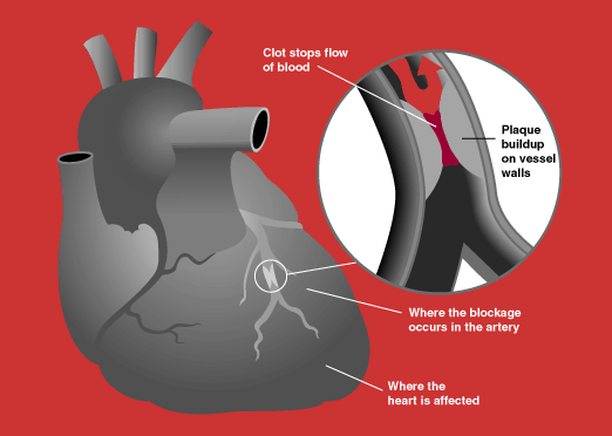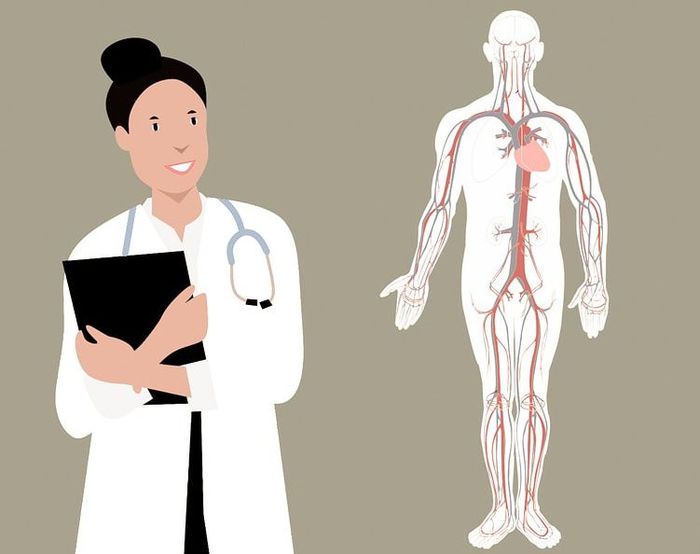Disease Prevention
Not What it has been Made Out to be, or what it Should be
“Preventive Medicine is practiced by all physicians to keep their patients healthy. Preventive Medicine focuses on the health of individuals, communities, and defined populations. Its goal is to protect, promote, and maintain health and well-being and to prevent disease, disability, and death.” From the first paragraph of What is Preventative Medicine? from the American College of Preventative Medicine
Twelve years ago next month, the Journal of the American Medical Association published a study called Actual Causes of Death in the United States, 2000 that produced some interesting conclusions. The authors determined that over half a million Americans die each year from tobacco and alcohol abuse (smoking was #1 on their list of preventable causes of death). However, they also concluded that, “poor diet and physical inactivity” came in a close second.
The problem was so bad that the authors warned, “poor diet and physical inactivity may soon overtake tobacco as the leading cause of death“. Naturally, they ended the paper with a plea for more research monies, saying we need to, “establish a more preventive orientation in the US health care and public health systems“. It makes sense doesn’t it? I mean…. who could argue with their logic? The problem is, despite decades of a steadily increasing emphasis on “Prevention,” most chronic health conditions have gotten worse — way worse.
In an era where EVERYTHING YOU THOUGHT YOU KNEW ABOUT HEALTHCARE is being turned on its head every single day, “Prevention” might just take the cake. According to Webster’s, Prevention’ means, “the act or practice of stopping something bad from happening“. Dorland’s Medical Dictionary says that Prevention is, “Serving to avert the occurrence of. Preventing or slowing the course of an illness or disease; prophylactic“. But is this what we are really doing with Preventive Medicine?
When we talk about “Preventative Medicine” today, what’s the first thing to pop into your mind? Usually it’s VACCINES. I am not going to spend a great deal of time on this subject. We already know that the most heavily promoted vaccine (the ANNUAL FLU VACCINE) has been an abject failure for both the 65 AND OLDER crowd, as well as those 18 AND UNDER.
And as for other Vaccines (not to mention the NEARLY 300 CURRENTLY IN R&D), even though they may have helped to reduce or contain any number of childhood diseases (many would argue that they have not — HERE), there are any number of experts who would argue that they have likewise played a big part in the explosion of Chronic Degenerative Diseases and Autoimmunity (see previous link as well as HERE). So; Vaccines aside, let’s take a moment and see how Preventative Medicine is faring in other areas of healthcare.
Obesity Prevention

“Perhaps the most pressing public health challenge for the United States today is the epidemic of overweight and obesity, which is linked to an array of costly and debilitating health consequences. According to data from the National Center for Health Statistics, two in three American adults are now overweight, including one in three who are obese. Not surprisingly, then, the obesity epidemic is a major driver of health care costs in the United States, and the costs may continue to increase significantly in the future if it is not controlled.
The increased health risks for major disease that come with obesity carry not only a high social price tag but also a high economic one—relative medical costs for the obese are estimated to be 36 to 100 percent higher than for Americans of healthy weight. By some estimates, nearly 21 percent of all current medical spending in the United States is now obesity related.” Cherry-picked from the Brookings Institute (Obesity, Prevention, and Health Care Costs)
The Robert Wood Johnson Foundation (The Long-Term Returns of Obesity Prevention Policies) says that, “Because such programs [the “various obesity-prevention efforts” spoken of earlier] would prevent obesity and related chronic conditions in the long run, they can help save money by reducing health care costs and increasing wages.”
While this is certainly true, it is only true if “Prevention” programs for Obesity actually work. Is there any indication whatsoever that these programs are functioning as intended? Although the internet abounds with sites (most of them from governmental sources) declaring this to be the case, the issue is far from cut and dried.
For instance, according to Harvard’s School of Public Health, all we need to lick OBESITY is better health insurance. “Health insurance plans, with their broad reach, can in many ways be the most important influence on the weight control behaviors of patients. They can cover the cost of obesity prevention and treatment; create and promote prevention programs that can be instituted plan wide.” Those who believe in the nearly mythical powers of government programs certainly believe this. In fact, the “Medicaid dot gov” website says (I’m cherry-picking here)……..
“Medicaid and the Children’s Health Insurance Program (CHIP) can play a role in reducing the rate of obesity in the United States by improving access to health care services that support healthy weight. For children enrolled in Medicaid, the Early and Periodic Screening, Diagnostic and Treatment (EPSDT) benefit covers all medically necessary services which can include obesity-related services.
For adults, the states can choose which services to provide, with most states choosing to cover at least one obesity treatment. Obesity screening and counseling for children, adolescents and adults is a USPSTF recommended service.”
Some of the specific things mentioned by Medicaid to help stem the tide of Obesity include (I am cherry-picking again), “designing public awareness campaigns, hosting calls and webinars, developing fact sheets, and efforts to increase awareness of preventive services.”I’m sure I’ve seen worse governmental gobblety gook somewhere else; I just can’t remember when or where.
A scientific paper from BYU (Cutting the Fat on Healthcare: An Investigation of Preventive Healthcare and the Fight on Obesity) from 2010 let the cat at least part way out of the bag. Even though the authors are extremely pro-Preventative, they revealed…..
“Changing the behavior of millions of Americans is not going to be accomplished merely through strategic legislation. In reality, such a change cannot come from any one office or program. Indeed, changing the behavior of millions of Americans requires just that—millions of Americans. Perhaps the answer to America’s healthcare issue does not lie in a change of policy but in a change of mindset“.
Although I could agree with this statement; how’s that change of mindset working out for the 80% of our nation who is either overweight or appear that way via their blood work (see next link)?
“Studies have shown that although some forms of preventable action can save money, others only add to costs. In fact, some estimates claim that fewer than 20 percent of preventive options would be cost-savings. Whether these estimates nullify the importance of more preventive measures is debatable…. Implementing preventive policies is somewhat hit or miss….. Localizing programs to only those at high risk is easier said than done.”
I guess because they don’t have anything better to offer in light of the fact that their bubble has just been burst, the authors advocate for more and smarter government programs — which is almost always where “Prevention” seems to take us. However, it was our own government’s U.S. Preventive Services Task Force (Final Recommendation Statement: Obesity in Adults: Screening and Management, June 2012) that concluded, “with moderate certainty that screening for obesity in adults has a moderate net benefit“. What does moderate mean?
After all is said and done, “The USPSTF found adequate evidence that intensive, multi-component behavioral interventions for obese adults can lead to an average weight loss of 8.8 to 15.4 lb.” Not only are these sorts of interventions extremely expensive, according to virtually all the research, the effects are short-lived.
Ten years ago in May, our government (HHS Public Access) carried a study called A Meta-Analytic Review of Obesity Prevention Programs for Children and Adolescents: The Skinny on Interventions that Work.
“A literature search identified 64 prevention programs seeking to produce weight gain prevention effects, of which 21% produced significant prevention effects (13 of 64)… Unfortunately, successful treatments have been elusive. For adults, the current treatment of choice only results in about a 10% reduction in body weight and virtually all patients regain this weight within a few years of treatment. Obesity treatments for children and adolescents have yielded similar effects. This meta-analytic review suggests that most interventions do not produce the hypothesized weight gain prevention effects and that the overall average intervention effect was small…“
At the end of the day, however, it’s not the studies that should be telling us that “Obesity Prevention” programs are successful and cost-effective or not. It’s the eye test. The brutal truth is that despite everything we are doing (not to mention the incredible amount of tax dollars being spent), obesity rates continue to soar.
And after you factor in those who are MONW into the equation (Medically Obese Normal Weight — some estimates say this group accounts for nearly 10% of the population), we begin to see that things are much worse than we ever imagined and getting worse.
The reason that I dealt first with Obesity is that all the others on this list largely flow from it (as well as it’s just as ugly twin sister, BLOOD SUGAR DYSREGULATION, which we will get to momentarily). Solve the Obesity crisis, and you go a long way toward solving the other problems on this page — all of them.
The problem is, despite all the time, energy, and tax-payer dollars being poured into solving this problem (HERE then HERE), we continue to spin our wheels. It sort of reminds me of having your car stuck in the snow or mud. Even though you put the pedal to the metal and rev the engine until the RPM’s approach red-line, the vehicle isn’t going anywhere.
Last July’s issue of Obesity Review proved this when they published a study called What Childhood Obesity Prevention Programs Work? A Systematic Review and Meta-Analysis. This study, like any number of others, determined that, “strength of evidence was moderate for school-based interventions targeting either diet or physical activity.” In other words, these programs seem to work — at least to a moderate degree — while at school.
However, at home — where kids live, eat, sleep, and SPEND MOST OF THEIR TIME — was a completely different story. After crunching the data from nearly 150 studies on the subject, researchers determined that, “strength of evidence was low for combined interventions [diet, exercise, education efforts] in childcare or home settings.” In other words, you may be able to force kids to do certain things at school, but they essentially do what they want to do when they get home.
Heart Disease Prevention

Because Heart Disease is the second leading cause of death in both American males and American females (Cancer recently overtook it), it behooves us to learn whether or not our nation’s “Prevention” tactics are working in this arena.
Despite the fact that the vast majority of physicians and government regulatory agencies are stuck in the 1970’s as far as their dietary recommendations are concerned (HERE), the latest government guidelines essentially reveal that we don’t need to be concerned with the amount of Cholesterol consumed in our diets (HERE). Knowing these simple facts proves that just like THE OPIOID EPIDEMIC, our government’s crappy and frankly unscientific recommendations are responsible for untold amounts of sickness and disease.
After DECLARING WAR ON DIETARY FAT, and making words like “CHOLESTEROL” and “STATIN DRUGS” a ‘normal’ part of American vernacular and culture, we now know that this approach was almost 180 degrees opposite of what actually works. What did decades of promoting ‘Low Fat’ and ‘Fat Free’ foods do to Americans? It left us fatter and sicker than any generation in the history of the world. Even though our lifespan is longer, research says that we are not more satisfied or happy.
We are essentially being kept alive with drugs and new technology (HERE), making our collective existence a proverbial goldmine for BIG PHARMA. Forget gold mines for a moment, let’s see what the gold standard of research — the COCHRANE REVIEW — had to say about this subject.
In 2011, Dr. Carl Heneghan, Director for Oxford University’s Evidence-Based Medicine & Clinical Reader Department, published a paper called Considerable Uncertainty Remains in the Evidence for Primary Prevention of Cardiovascular Disease. Of course it talked about the benefits of quitting CIGARETTES, which you’ll find on virtually all lists for Heart Disease “Prevention”. But that’s where the similarities to the usual back-slapping that goes on within the medical community over their ‘raging successes’ against Heart Disease, ends. Here are some cherry-picked tidbits from his paper.
“Disappointingly, the current evidence concluded that counseling and education to change behavior do not reduce total or coronary heart disease mortality or clinical events in general populations. In the second Cochrane Review in this edition, which assessed statins for the primary prevention of CVD, 14 randomized controlled trials were included. Overall all-cause mortality was reduced by statins, as well as combined fatal and non-fatal cardiovascular endpoints.”
So, when the numbers were crunched in these studies, we saw that even though education efforts and counseling do not make a difference, Statins did help to reduce heart attacks, strokes, and death. Sounds pretty good to me. However, the paper does not end there.
“There are a number of concerning points with this review that arise due to limitations in the published data. The current Cochrane Review results for primary prevention using statins are at odds with previous reviews.”
At odds with previous reviews? What could this phrase possibly mean? If you take a look at THIS POST, I show you the numerous ways that Big Pharma is finagling their research to make it say whatever they want it to say. For one, they are only reporting the findings that show their products or services in a good light (“in over one third of trials, outcomes were reported selectively“).
Another way of making things look better than they actually are is by, “not reporting on adverse events at all“. There were others. And when Cochrane went back to get the “INVISIBLE DATA,” guess what? The researchers refused to turn it over (“important data were not obtainable despite attempts to contact authors“). Dr. Heneghan went on to write that….
“This is unacceptable. All of these shortcomings significantly undermine the findings of this review. To date only one trial has been publicly funded, while the authors of nine trials reported having been sponsored either fully or partially by pharmaceutical companies. Although various multiple prevention strategies exist, the most effective and cost-effective intervention for primary prevention in adults at low risk currently remains unclear.
Given the current limitations of the evidence-base, the alternative approach for policy is to focus on population-wide prevention. Legislating for smoke-free public spaces, re-designing public spaces to improve exercise or reducing daily dietary salt intake prove generally effective and can be cost-saving interventions.”
Although dealing with HYPERTENSION is certainly important for reducing Heart Disease, there is a great deal of debate about how to go about accomplishing this. The good doctor should realize that the evidence for dietary restriction of salt is far more controversial than most people ever dreamed (HERE).
By the way, because the studies did not, for the most part, differentiate between participants with previous Cardiovascular Disease and those without, Dr. Heneghan was loathe to make population-wide recommendations for Statin Drugs — something that many in the medical community have been pushing for mightily (HERE).
Diabetes Prevention

It was extremely difficult to find the truth concerning whether or not Prevention was effective for Heart Disease. This was not the case with DIABETES, as information abounds on the topic. The “eye test” reveals that AOD (Adult Onset Diabetes aka Type II Diabetes) is exploding in America.
I spoke to one of our local physicians the other day, who said that it is not terribly uncommon to treat children as young as 14 (or even 12) with Type II Diabetes, something I am seeing in my clinic as well. Despite the fact that nearly 1 in ten Americans has Diabetes (and over half have pre-Diabetes — HERE), what does the scientific literature say about prevention efforts?
I will get there, but I want to say something about Type II Diabetes and our government. The American Heart Association’s recommended diet for halting or reversing Diabetes, used to be worse than you could imagine. The recommendations were to avoid any and all fat like the plague (eat MARGARINE or vegetable oil if you must put fat in your body), stay far away from RED MEAT, BUTTER, or EGGS, and essentially live on staples like low-fat bread, potatoes, and pasta.
Although I no longer have it, I used to keep a copy of the AHA’s actual recommended diet. Believe it or not, one of their ‘healthy’ snacks was fat-free saltine crackers. As you may have noticed, THE GOVERNMENT’S RECOMMENDATIONS have not necessarily improved much over the decades. What does this mean for those who actually follow these recommendations? Once more it means that lay a significant chunk of the blame for the explosion of Diabetes at the very feet of the entity that was trying to save us from ourselves in the first place — our government.
Because research tells us that simply cutting things like PROCESSED CRAP and SODA from our diet, and exercising just a little bit, can reduce our chances of Diabetes by something like 60%, we should be seeing amazing results with Prevention efforts.
- In 2006, Cochrane looked at studies on the efficacy of using exercise alone for treating Type II Diabetes. “Exercise significantly improves glycemic control and reduces visceral adipose tissue [BELLY FAT] and plasma triglycerides, but not plasma cholesterol, in people with type 2 diabetes, even without weight loss.“
- In 2007, the Cochrane Review looked at the studies on the efficacy of using diet alone for treating Diabetes. “There are no high quality data on the efficacy of the dietary treatment of type 2 diabetes.“
- In 2008, Cochrane looked at both diet and exercise together. “Incidence of diabetes was reduced by 37% with exercise and diet. This had favorable effects on body weight, waist circumference and blood pressure.“
Believe me when I tell you that America is not the only nation fighting to get the recent explosion of Type II Diabetes under control. Virtually every Westernized nation (most nations are slowly becoming Westernized) is struggling with this issue. England is no different. Last year, the British Medical Journal published a paper from a group of doctors called Time to Question the NHS Diabetes Prevention Programme.
“A newly published evidence synthesis of the effect of lifestyle interventions on overall mortality in prediabetes cites 17 trials that failed to show a significant effect, and one that just reached statistical significance. Effects tend to be far smaller in unselected free living populations than in trial participants.
Astonishingly, given that this lifestyle intervention will become national policy, the Public Health England reports offer no formal estimate of the programme’s cost or cost effectiveness. The assumption that it will save money is based on speculation that the intervention will produce ‘optimal effects whilst keeping costs to a minimum.'”
Assumptions. Hmmmmm? Let me hit you with another that will rock your diabetic world. Back when I was attending Logan College of Chiropractic in the late 80’s and early 90’s, one of my professors was the brilliant (and funny) Dr. Duane Marquardt. Dr. M always made us think outside the box; and one of the statements I remember him making was that Diabetes is not a Blood Sugar problem.
Instead, ALONG WITH A WHOLE HOST OF OTHER HEALTH PROBLEMS (everything on today’s bullet points and many more), Diabetes is a problem of “INFLAMMATION“. And because I don’t see one person in a thousand who truly understands Inflammation, I see many people missing the boat because despite the fact they’ve lost enough weight to be considered downright skinny (not to mention they are exercising like there’s no tomorrow) they still can’t control their Blood Sugar without drugs (even though THIS CLASS OF DRUGS HAS BEEN PROVEN LARGELY WORTHLESS).
Cancer Prevention

“Most importantly, we will require insurance companies to cover routine checkups and preventive care, like mammograms and colonoscopies. There’s no reason we shouldn’t be catching diseases like breast cancer and prostate cancer on the front end. That makes sense, it saves lives, and it can also save money.” President Barack Hussein Obama being quoted in the August 18, 2009 issue of the New York Times (The Problem With Prevention). The President’s statement seems intuitive enough — like it should be true. But is it?
What do we know about CANCER? Even though the medical community swears up and down that it’s a TOTALLY RANDOM EVENT, we know that it is intimately related to crappy diets. In fact, thanks to the work of Dr. Otto Warburg, we’ve known that Sugar actually causes Cancer (HERE) since the early 1930’s.
Listen to his impressive Wikipedia entry. “Warburg (1883-1970) is considered one of the 20th century’s leading biochemists. He was the sole recipient of the Nobel Prize in Physiology in 1931. In total, he was nominated for the award 47 times over the course of his career.” What was Warburg most famous for? What did he win his Nobel Prize for? For figuring out that Cancer is fed by the fermentation of SUGAR.
Dr. Warburg came to the conclusion that Cancer cells generated energy via “fermentation” as opposed the way that healthy cells generate energy (Glycolosis — remember the Krebs TCA Cycle from biology class?). Because all of this takes place in the MITOCHONDRIA, he determined that Cancer is largely the result of defects in mitochondrial function. In fact, listen to what Warburg wrote back in the 1960’s (The Prime Cause and Prevention of Cancer – Part I).
“Cancer, above all other diseases, has countless secondary causes. But, even for cancer, there is only one prime cause. Summarized in a few words, the prime cause of cancer is the replacement of the respiration of oxygen in normal body cells by a fermentation of sugar.”
And although he at least partially missed the boat concerning Cancer’s relationship to nutrition (he was a proponent of adding huge amounts of SYNTHETIC NUTRIENTS to foods), he was right on the money when it came to the realization that food and nutrition were important as far as their relationship to Cancer.
“There exists no alternative today to the prevention of cancer as proposed at Lindau. Indeed millions of experiments in man, through the effectiveness of some vitamins, have shown, that cell respiration is impaired if the active groups of the respiratory enzymes are removed from the food; and that cell respiration is repaired at once, if these groups are added again to the food.“
But when it comes to Cancer, what are we trained to think of by the powers that be (the medical community, the government, Big Pharma, etc). What do most of us think of when we think of “preventing” Cancer? Take a look at the posters at the top of this bullet point (or Obama’s quote) and see if your memory is not jogged. We are taught that because early detection equals high cure rates, everyone needs to be going through all sorts of diagnostic screening on a regular basis.
I’ve dealt extensively with this myth in the past, but if you want to see a very brief example what I am talking about, HERE is the link (look under the bullet point that says, “Routine Prostate Exams, Breast Exams, Mammograms, Colonoscopies, Female Exams, Physicals, Cancer Screenings, Blood Work, etc)”
Prevention: Poor Diets and Sedentary Lifestyles

“Preventive care is more about the right thing to do because it spares people the misery of illness. But it’s not plausible to think you can cut healthcare spending through preventive care. This is widely misunderstood.” Dr. Austin Frakt of Boston University being quoted in a January 2013 article for Reuters called Think Preventive Medicine Will Save Money? Think Again. Frakt’s premise that more Preventative Medicine is going to ultimately spare people the “misery of illness” rings about as hollow as LBJ’s promise to make poverty and sickness things of the past back in the 1960’s.
“A 2010 study in the journal Health Affairs calculated that if 90 percent of the U.S. population used proven preventive services, more than do now, it would save only 0.2 percent of healthcare spending.” Susan Perry from her January 13, 2013 issue of the Minneapolis Post (Why Preventive-Medicine Services Aren’t Lowering Health-Care Costs)
“Prevention” makes us feel good — like we are doing more than we really are. It’s kind of like throwing a few bucks in the plate on Sunday, but then failing to love our neighbors (let alone our enemies) on Monday.
With “Prevention” we get to go to the doctor and have some shots that ‘prevent’ us from getting diseases that everyone used to get or that we don’t need to worry about in the first place (chicken pox is a prime example). And as we get older, we make regular trips to be run through bunches and bunches of tests.
Unfortunately, as Susan Perry’s quote above proves, we’re deceiving ourselves to believe that these efforts have much of anything to do with real Prevention (go back and read the last link if you think I am overstating this idea). And while it’s certainly true that “Prevention” is intimately related diet and exercise, there is much more to it than that (GUT HEALTH is one example of many).
As I showed you today, you can’t trust much of the Prevention advice floating around the world wide web — especially if it comes from the government or healthcare entities working hand-in-hand with the government. Case in point; a 2012 issue of Circulation: The Official Journal of the American Heart Association (Role of Policy and Government in the Obesity Epidemic) actually equated meat with junk food and cola — something that was likewise done just a few months ago in the Lancet (HERE).
“The primary determinants of weight gain were consumption of unhealthy foods such as potato chips, French fries, sugary drinks, and meat.”
Fat-free milk was then mentioned as a “healthy” alternative to soda pop. Honestly folks, with friends like this, who needs enemies? But every dark cloud has a silver lining.
The cool thing is that the same protocol can be used to help prevent all of the health problems we discussed today. That’s all as in all. Just remember that Prevention is just that — preventing problems before they manifest with visible symptoms. There’s no shortcut to getting healthy and staying healthy. It’s something that no doctor can do for you. You’ll have to make up your mind and do it yourself. This means that you will have to expend some effort.
Rather than me spending tons of time rehashing the best diets or the best sorts of exercise for preventing (or possibly reversing) the various health problems we’ve discussed today (as well as any number of others), you can find it all HERE. And I’m including a bonus.
This link shows you numerous ways to help diminish the Inflammation that causes (that’s right folks; it causes) each and every one of the points on this list because they are all — every one of them (along with most AUTOIMMUNE DISEASES) — considered to be “inflammatory” (caused by inflammation). It will also help you even your odds of corralling the EPIGENETIC FACTORS that are constantly trying to destroy your health and life.
